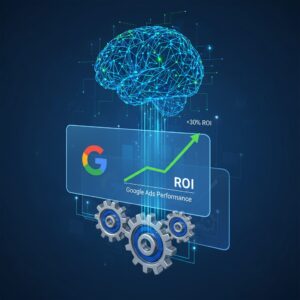
Small businesses don’t have time or resources to waste. Every dollar counts. Every decision must drive profit. Traditional market research is slow, costly, and often outdated by the time you get results. That’s where AI-driven market research changes the game. It delivers faster, smarter insights that translate directly into increased profits.
This post breaks down exactly how small businesses can leverage AI-powered market research to boost profits. No fluff. No theory. Just actionable steps and real-world tactics.
1. Why AI-Driven Market Research Is a Profit Multiplier
Market research is the foundation of every smart business decision. Knowing your customers, your competitors, and market trends lets you target smarter, price better, and innovate faster.
Traditional research methods are slow and expensive. Surveys take weeks. Focus groups require coordination and money. Data analysis is manual and prone to bias.
AI changes all that:
- Speed: AI tools analyze massive data sets in minutes, not months.
- Accuracy: Machine learning models detect patterns humans miss.
- Cost-Effective: Automated data collection and analysis cut expenses.
- Real-Time Insights: Continuous monitoring keeps you ahead of shifts.
- Scalability: AI scales with your business, no hiring needed.
Bottom line: AI-driven market research gives you sharper insights faster, so you make decisions that increase profits, not just guesswork.
Takeaway: AI market research is not a luxury. It’s a profit multiplier every small business must use to survive and thrive.
2. How Small Businesses Can Use AI Market Research to Boost Profits
Let’s get tactical. Here’s how to leverage AI-driven market research for profit gains:
a. Identify High-Value Customer Segments
AI analyzes customer data—purchase history, demographics, online behavior—to find your most profitable segments. Stop wasting marketing on low-value groups.
Use AI clustering tools to segment your audience by profit potential. Focus your marketing budget on these segments to maximize ROI.
b. Optimize Pricing Strategies
AI models predict how customers respond to different price points. Use AI-powered price optimization tools to set prices that maximize revenue without losing customers.
Dynamic pricing powered by AI adapts to market demand and competitor moves in real time. This flexibility boosts profits by capturing maximum willingness to pay.
c. Discover Untapped Market Opportunities
AI scans online conversations, search trends, and competitor activity to reveal emerging needs and gaps in the market.
Use AI-powered trend analysis tools to spot new product ideas or service improvements before your competitors.
d. Refine Your Marketing Messaging
AI-driven sentiment analysis helps you understand customer feelings about your brand and competitors. Use this insight to craft messaging that resonates and converts better.
Test different messages with AI tools to identify what drives engagement and sales.
e. Monitor Competitors Continuously
AI tools track competitor pricing, promotions, and customer reviews in real time. Use these insights to adjust your strategy quickly and stay competitive.
Takeaway: AI market research isn’t just data—it’s a tactical weapon to target, price, innovate, and outmaneuver competitors for profit growth.
3. Implementing AI Market Research: A Step-by-Step Guide for Small Businesses
You don’t need to be a tech expert or have a big budget. Here’s a simple roadmap to get started:
Step 1: Define Your Business Goals
Identify what profit-related questions you want AI to answer. Examples:
- Which customer segments generate most profit?
- What price points maximize sales and margins?
- What new product features will customers pay for?
Clear goals focus your AI research efforts.
Step 2: Choose the Right AI Tools
You don’t need to build AI from scratch. Use affordable, user-friendly AI market research platforms. Look for:
- Customer segmentation
- Pricing optimization
- Sentiment and trend analysis
- Competitor monitoring
Many tools offer free trials—test before committing.
Step 3: Gather Your Data
Collect data you already have—sales, customer info, website analytics. Supplement with external data from social media, review sites, and public databases.
AI thrives on data volume and variety.
Step 4: Run AI Analysis
Feed your data into AI tools. Analyze customer segments, pricing scenarios, market trends, and competitor activity.
Expect rapid insights—within days or weeks, not months.
Step 5: Act on Insights
Translate AI findings into concrete actions:
- Target high-value segments with tailored offers.
- Adjust pricing dynamically.
- Launch products that meet emerging demand.
- Refine marketing messages based on sentiment.
Step 6: Monitor and Iterate
AI market research is continuous. Keep monitoring results and refine your approach regularly to sustain profit growth.
Takeaway: Implementing AI market research is a stepwise process anyone can follow. The key is starting with clear goals, choosing the right tools, and acting decisively on insights.
For more business tips, visit https://thoughts.business/category/business-tips/
Explore investment insights at https://whyinvest.info/





